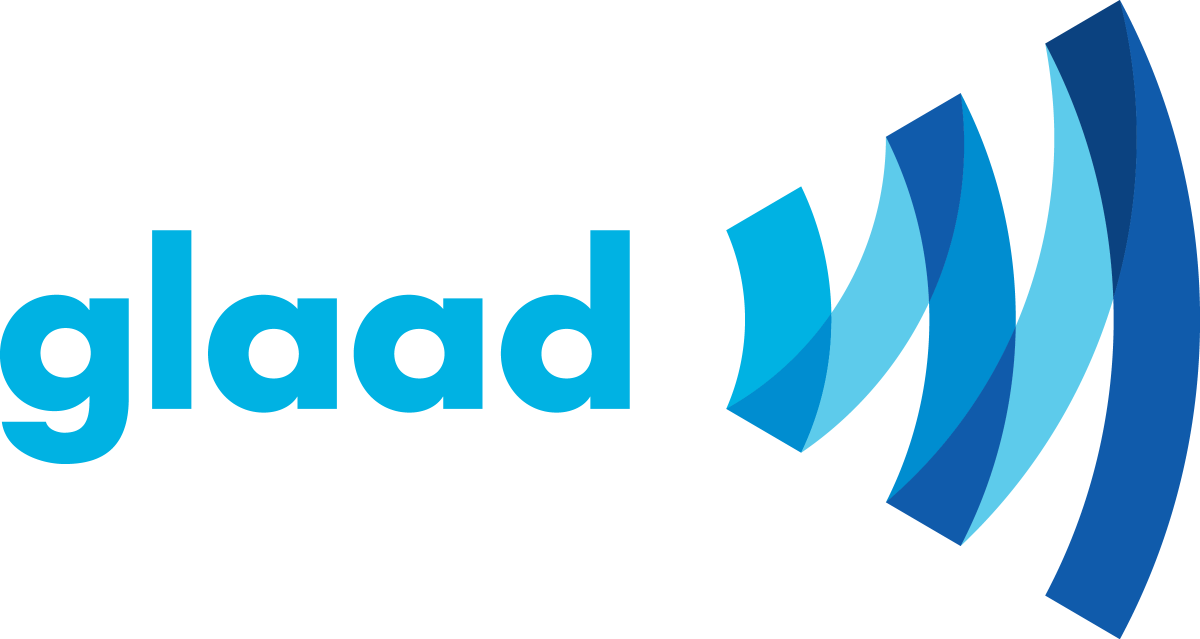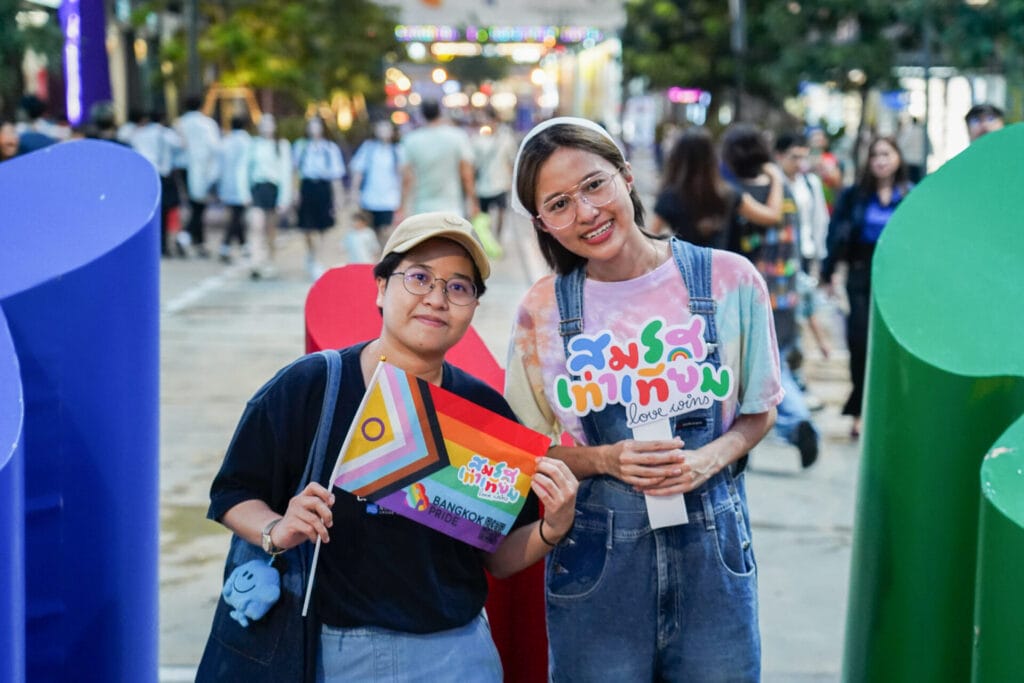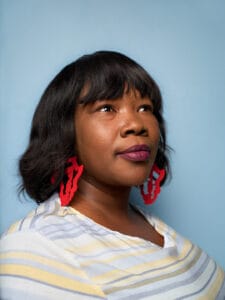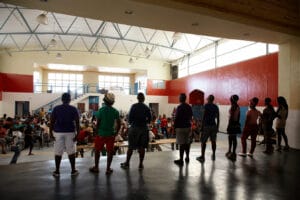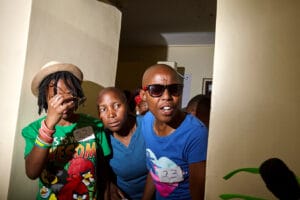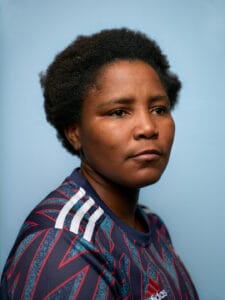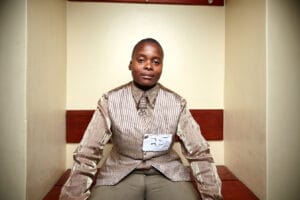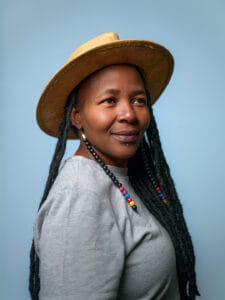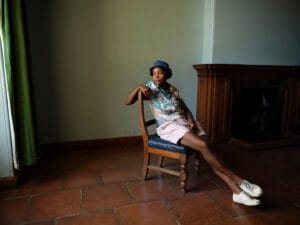Article by GLAAD & The Asian American Foundation (TAAF)
When the magnifier of hate is turned on you, it’s easy to feel isolated and alone. Hate is meant to divide us and to keep us from finding common ground. But as the great Audre Lorde once wrote, “You do not have to be me in order for us to fight alongside each other. I do not have to be you to recognize that our wars are the same.”
As we enter AANHPI Heritage Month, GLAAD (previously the Gay & Lesbian Alliance Against Defamation, now just known as GLAAD to include all LGBTQ identities) and The Asian American Foundation (TAAF) are partnering up to explore how the same kinds of hate impact both Asian American, Native Hawaiian, and Pacific Islander (AANHPI) and lesbian, gay, bisexual, transgender, and queer (LGBTQ) people, and especially those who live in the intersection between our communities. From harmful tropes to government-sanctioned discrimination, GLAAD and TAAF cover three common anti-AANHPI and anti-LGBTQ strategies – and how we can work together to overcome them.
Harmful & Dehumanizing Tropes
Marginalized groups are often subjected to dehumanizing language by those in power, especially sensationalized language meant to disgust and incite rage. Throughout history, for example, the Nazi regime compared Jews to “rats,” and during the Rwandan genocide, government-affiliated propaganda referred to Tutsis as “cockroaches.”

Tropes against Asians have similarly persisted, fueling xenophobic policies and violence. During the Philippine-American War, Filipinos were subjected to racialized public health measures and fears of miscegenation among White American soldiers. In the US, 19th- and 20th-century “Yellow Peril” rhetoric portrayed Asians as unsanitary and prone to spreading diseases like leprosy and smallpox, justifying segregation and medical discrimination. Chinese communities were often quarantined in slums, and prominent figures vilified Chinese prostitution as a source of contamination. Similarly, in the late 19th and early 20th centuries, Pacific Islanders were stigmatized as disease carriers by American and European colonizers, who blamed their cultural practices for outbreaks of leprosy and tuberculosis, leading to forced quarantines like the Moloka‘i settlement and ongoing discrimination in public health policies. These narratives resurfaced during modern health crises like the SARS and COVID-19 outbreaks, where Asians were scapegoated. Media coverage and public discourse fixated on Chinese wet markets and “unsanitary” practices, while political rhetoric—such as calling COVID-19 the “Chinese virus”—fueled anti-AAPI hate, leading to thousands of reported hate incidents in 2020 alone.
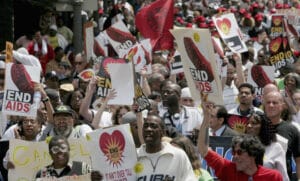
We see these same parallels play out as an attempt to discredit and demonize LGBTQ people in the US. In the 1980s, the HIV/AIDS epidemic ravaged the LGBTQ community, specifically impacting gay men and trans women, as well as immigrants and racial minorities. Originally referred to as the “gay disease,” LGBTQ people were often seen as lepers, causing many living with HIV/AIDS to be abandoned by family and friends and receive discriminatory treatments by healthcare providers and employers. In fact, many LGBTQ women like the San Diego Blood Sisters had to step in as the sole caretakers and medical providers for those afflicted and isolated. These negative perceptions linger today, with 85% of Americans still believing that there is a stigma around HIV, according to GLAAD’s 2024 report. The 2022 outbreak of mpox (formerly monkeypox), which impacted many LGBTQ people, brought back many of these same false and dehumanizing comparisons. Even today, we still see opponents of transgender people falsely claim that transgender youth are not an authentic representation of identity but rather “caused” by the so-called (but scientifically never proven) theory that “social contagion” is unduly influencing teens. This harmful trope of marginalized groups as a “plague” is, in every context, a blatant attempt to undermine, ostracize and scapegoat already vulnerable communities.
Government Purges
These narratives also inspire federal policies that attempt to exclude, erase, and discriminate against communities.
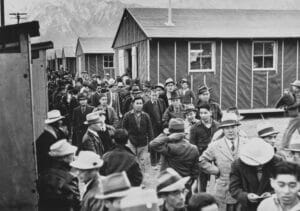
AANHPIs, for example, have long been subjected to exclusionary policies, mass incarceration, and attempted erasure from national history. These policies are rooted in the false and discriminatory notion that sets up White Americans as the default, with other groups deemed “perpetual foreigners” even though many have lived in the US for centuries and generations. According to TAAF’s 2024 STAATUS report, nearly 40% of Americans believe Asian Americans are more loyal to an Asian country than to the US, a sharp rise from nearly 25% in 2023. This suspicion has justified historical discrimination, such as the WWII incarceration of 122,000 Japanese Americans under Executive Order 9066, based on unfounded fears of espionage. More recently, US-China tensions have led to heightened scrutiny of Asian Americans in national security roles, with many facing unfair job restrictions and forced resignations. The China Initiative in 2018, discontinued in 2022, wrongly targeted ethnic Chinese scientists, including MIT Professor Gang Chen, reinforcing racialized government crackdowns. The US government has also sought to censor AANHPI contributions from history— on March 7, 2025, the Pentagon and US Army removed 26,000 DEI-related images, including references to the 442nd Regimental Combat Team, a highly-decorated Japanese American unit that fought for the US while their families were imprisoned. These patterns reveal an ongoing effort to exclude, surveil, and diminish AAPIs from national narratives and institutions.
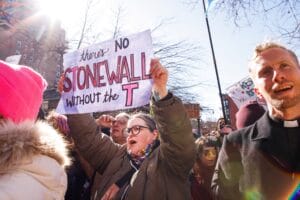
The LGBTQ community has faced similar government tactics, both currently and historically. In the early years of the Cold War, thousands of LGBTQ US government employees were covertly investigated and subsequently fired over their identity during a period dubbed the “Lavender Scare.” It would take decades to repeal hundreds of discriminatory state and federal bills targeting LGBTQ people, like anti-sodomy laws, employment discrimination on the basis of sexual orientation, and police raids targeting “sexual deviancy.” Yet, even today these discriminatory attacks continue with over 500 anti-LGBTQ bills introduced at the state-level in 2025 alone. At the federal level, the administration has mandated the removal of recognition of LGBTQ identities through agency directives and executive orders, with GLAAD reporting that government websites related to terms like “LGBTQ,” “lesbian,” “bisexual,” “gay,” and “transgender” were pulled down. Federal agencies like the CDC and HHS have purged information pertaining to LGBTQ people from their websites, including medical research on HIV, a disease which disproportionately impacts gay men and trans women, among others. The National Park Service also removed mention of transgender leaders on national monument webpages like the Stonewall Inn, which highlights the contributions of trans women of color like Marsha P. Johnson and Sylvia Rivera in the fight for LGBTQ equality. One executive order went a step further by issuing an intent to ban transgender personnel in the US military, even those already serving capably and honorably, as well as mandating the pronouns a person can use to align with sex assigned at birth. These are all examples of legalized isolation and attempts at erasing LGBTQ and AANHPI people from government recognition.
Restriction of Movement
The US government also has a long history of actually restricting the movement of “perceived threats” both within and outside of the US.

In the late 19th and early 20th centuries, laws like the 1875 Page Act, 1882 Chinese Exclusion Act, and 1888 Scott Act barred Chinese immigrants from entering or re-entering the US, while the 1902 Geary Act made the exclusion permanent and required Chinese residents to register or face deportation. Anti-Asian policies expanded with the 1917 Immigration Act, which created the “Asiatic Barred Zone,” and the 1924 Immigration Act, which completely halted Asian immigration except for Filipinos. Organizations like the 1905 Asiatic Exclusion League further promoted segregation and employment bans. Today, these exclusionary policies persist through measures like the recent Stop CCP Visas Act, which seeks to stop the issuance of study visas to Chinese nationals, ongoing birthright citizenship debates that perpetuate the “forever foreigner” myth, H-1B visa restrictions that destabilize the livelihoods of AANHPIs working in the US, and immigration enforcement that disproportionately targets Southeast Asian refugees for deportation. With 1.7 million undocumented AANHPIs, or roughly 1 in 8 of all undocumented immigrants, and growing discrimination against foreign-born communities, AANHPIs continue to face legal and societal barriers that threaten their ability to live and move freely in the US.
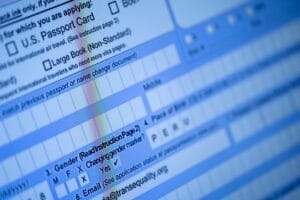
LGBTQ people have also been targeted by these immigration and travel policies. The same 1917 Immigration Act that created the “Asiatic Barred Zone” also banned the entry of queer and gender-nonconforming migrants. In 1952, the McCarran Walter Immigration Act placed a ban on migrants “afflicted with psychopathic personalities,” which referred to the false, yet commonly-held belief that LGBTQ people are the product of mental illness. This act remained in effect until the 1990 Immigration Act. With the start of the current administration in January 2025, anti-trans executive orders, such as the one which erroneously stated that there are “only two genders,” have placed discriminatory barriers on transgender and nonbinary people seeking to move within and outside of the US. Government agencies like the State Department are now reversing LGBTQ-inclusive policies used for gender markers on identity documents like passports, birth certificates, and drivers licenses. This brings challenges to everyday tasks like driving, flying, applying for loans, buying / renting a home, etc. As one guest columnist aptly wrote, “The message, consistent and unrelenting, is that trans people are a threat to the nation. The subtext is that we are not of this nation.”
Resources List
Despite the challenges that face us, the first step in pushing back on hate is recognizing the power of coalition building. Hate that impacts one of us, impacts all of us. With this in mind, we have compiled a list of resources to help bolster community resilience and stop hate for good.
- Lambda Legal’s checklist for transgender and gender non-conforming people on obtaining accurate identity documents.
- The LGBT Bar Association’s list of vetted lawyers
- Advocates for Trans Equality (A4TE)’s Trans Legal Services Network
- Help Hotlines
- Rainbow Youth Project: 317-643-4888
- Trevor Project: 866-488-7386
- Trans Lifeline: 877-565-8860
- LGBT National Senior Hotline: 888-234-7243
- National LGBTQ Institute on Intimate Partner Violence Hotline: 212-714-1141
- TAAF AAPI History Hub: A resource for educators
- Nonprofit Protocol Template on engaging with immigration officers
- New York Lawyers for the Public Interest and Lawyers Alliance for New York’s Guidance to Nonprofits Regarding Immigration Enforcement
- NYC AAPI Hate Tracker Report for hate incidents
Further Readings:
- Asian Pacific Institute on Gender Based Violence (API GBV) 2024 Fact Sheet
- The Trevor Project report on AAPI LGBT youth and mental health crisis
- GLAAD 2024 HIV Stigma Report
- GLAAD ALERT Desk, our anti-LGBTQ extremism reporting hub
- TAAF AAPI History Hub: A resource for educators
- TAAF 2025 STAATUS Index, tracking attitudes towards Asian Americans, Native Hawaiians, and Pacific Islanders
- TAAF AANHPI Youth Mental Health Survey, includes LGBTQ subgroup
